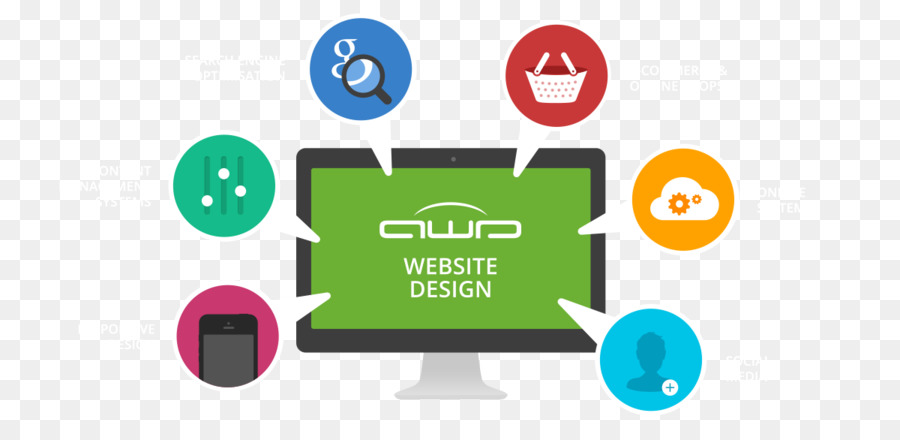Fascinated In Discovering How Site Layout Has Developed? Discover The Journey From Straightforward Styles To User-Centric Strategies
Fascinated In Discovering How Site Layout Has Developed? Discover The Journey From Straightforward Styles To User-Centric Strategies
Blog Article
Uploaded By-Abel Singer
In the past, internet sites were easy and concentrated on details. Navigation was direct, and layout was for desktop computers. Currently, customer experience is crucial. Information overviews designs for very easy navigation. Responsive designs match different gadgets. Today, dark mode reduces stress, and minimalist menus improve navigation. Interactive functions involve individuals, and strong visuals stick out. AI combination improves engagement. See how website creators has actually progressed to enhance your on-line journey.
Early Days of Web Design
In the early days of web design, simplicity reigned supreme. Internet sites were standard, with limited shades, typefaces, and layouts. The emphasis was on offering information instead of showy visuals. Users accessed the net with sluggish dial-up connections, so rate and capability were key.
Navigating food selections were straightforward, usually located on top or side of the page. Websites were made for home computer, as mobile surfing had not been yet prevalent. Content was king, and developers focused on simple readability over complex style aspects.
HTML was the main coding language used, and designers needed to function within its restraints. Animations and interactive functions were minimal compared to today's requirements. Internet sites were static, with little vibrant material or tailored user experiences.
Surge of User-Focused Design
With the advancement of website design, a shift towards user-focused style concepts has actually come to be significantly prominent. Today, producing websites that focus on individual experience is important for engaging site visitors and accomplishing business objectives. User-focused style includes recognizing the needs, preferences, and actions of your target audience to customize the site's layout, web content, and includes appropriately.
Designers now perform extensive research study, such as user surveys and functionality screening, to gather understandings and feedback directly from users. https://israelcxqjc.bleepblogs.com/30369850/open-the-secrets-of-enticing-local-clients-through-regional-seo-strategies-yet-don-t-take-too-lightly-the-international-appeal-of-conventional-search-engine-optimization-find-out-the-essential-distinctions -driven strategy helps in producing intuitive navigating, clear calls-to-action, and aesthetically attractive interfaces that reverberate with visitors. By placing the customer at the facility of the style process, internet sites can provide a more customized and enjoyable experience.
Receptive design has actually likewise become a key element of user-focused layout, guaranteeing that internet sites are maximized for various gadgets and display dimensions. This adaptability boosts ease of access and use, satisfying the diverse methods individuals interact with web sites today. In essence, the increase of user-focused style symbolizes a shift towards developing electronic experiences that focus on the needs and assumptions of the end individual.
Modern Trends in Website Design
Discover the latest patterns shaping web design today. One popular pattern is dark mode layout, offering a smooth and modern look while reducing eye pressure in low-light environments. Another essential trend is minimal navigating, simplifying menus and improving user experience by focusing on essential elements. Integrating micro-interactions, such as computer animated buttons or scrolling effects, can develop a more interesting and interactive site. https://www.forbes.com/sites/forbesagencycouncil/2020/04/24/digital-marketing-matters-now-more-than-ever/ stays important, ensuring smooth user experiences across different devices. Additionally, making use of bold typography and unbalanced designs can add aesthetic interest and draw attention to certain material.
Integrating AI technology, like chatbots for client support or individualized recommendations, boosts individual engagement and simplifies processes. Access has likewise become a considerable fad, with developers prioritizing inclusive layout techniques to accommodate diverse individual demands. Accepting sustainability by enhancing website efficiency for rate and efficiency is another arising fad in website design. Working together with user responses and information analytics to repeat and improve design continually is vital for remaining relevant in the ever-evolving electronic landscape. By accepting these modern trends, you can create an aesthetically enticing, user-friendly internet site that reverberates with your audience.
Conclusion
As you reflect on the advancement of website style from the very early days to currently, you can see just how user-focused design has actually ended up being the driving force behind modern fads.
Embrace the trip of change and adjustment in website design, always keeping the individual experience at the leading edge.
Remain current with the most recent trends and modern technologies, and never ever quit progressing your technique to produce aesthetically magnificent and straightforward web sites.
Evolve, adjust, and develop - the future of website design remains in your hands.
